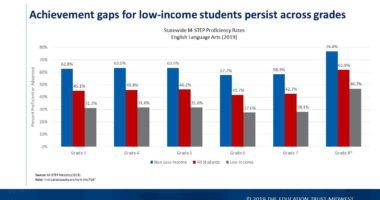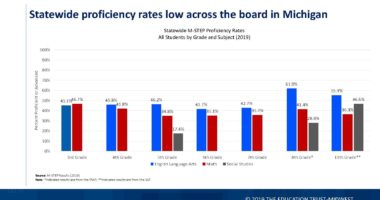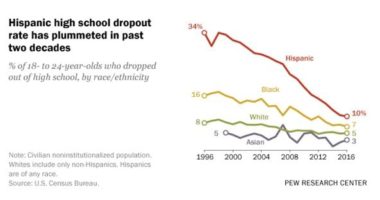Why Michigan M-STEP results are cause for concern
by Lori Higgins and Kristi Tanner, Detroit Free Press
Michigan students showed little improvement in language arts and math on the state’s tough new standardized exam, but they saw increases in science and decreases in social studies.
The data, from results released today on the Michigan Student Test of Educational Progress (M-STEP), are concerning because it shows — for a second year in a row — that scores of students are failing the tests that are part of the state exam.
Overall, 47.3% of students in grades 3-8 passed the English language arts portion of the M-STEP, compared to 47.8% in 2015. In math, 37.2% passed, a slight increase over last year’s 36.9%.
Meanwhile, in science, 23.8% of students in grades 4, 7 and 11 passed the science exam, up from 21.4%. And 30.3% of students in grades 5, 8 and 11 passed in social studies, down from 31.7% last year.
The exam was given in the spring. The stakes are high now that the State School Reform Office has said it intends to use the scores to make decisions about whether to close chronically low-performing schools.
Also released today by the Michigan Department of Education: Student scores on the SAT, given for the first time as part of the M-STEP. The average total score in Michigan was 1001, out of a possible score of 1600, with students performing far better in reading and writing than they did in math.
The M-STEP results were dismal for students in the state’s largest city, where so few students — in the Detroit Public Schools Community District and the Educational Achievement Authority — passed the exam in some grades and subjects that they fell below the 5% threshold the state uses for reporting scores.
For elementary and middle school grades, the biggest gap was in fourth-grade math. Just 15.07% of black students were proficient, while 52.31% of white students were proficient. For Hispanic students, the biggest gap was in fifth-grade math, with 19.19% of Hispanic students proficient and 40.99% of white students.
Even more sobering: the gaps are even larger when compared to Asian students. In fourth-grade math, 71.69% of Asian students were proficient, while 63.9% of Asian students were proficient in fifth-grade math.
Despite the lack of overall movement in the scores, MDE officials were pleased that in two-thirds of the grades and subjects tested, there were slight improvements.
Most significant was in science, Venessa Keesler, deputy superintendent, said during a media call this morning. The percentage of students proficient in the subject improved at each of the three grade levels tested.
“We raised the bar on what Michigan students are able to do,” Keesler said. “Fifty percent have work to do to meet the standards.”
There remains uncertainty surrounding the future of the M-STEP. State Superintendent Brian Whiston has signaled that he’d like to see Michigan transition to an exam that can better measure growth and be given multiple times in a school year, while maintaining an M-STEP-like exam that would be given once in elementary school and once in middle school. The state will move in that direction this fall when, for the first time, students in grades K-2 take an exam that would be repeated in the spring so schools can see how much students learn over the course of the school year.
The kindergarten exam is optional. And while there will be a state-produced exam, schools are free to choose their own test.
Some say the state needs stability and should stick with the M-STEP.
“Students and teachers need stability and everyone, especially parents and policymakers, deserves honest and reliable data,” Amber Arellano, executive director of the Education Trust-Midwest, said in a news release. “Changing tests again would put our schools into greater turmoil and prevent transparency for years.”
The M-STEP exam is largely based on the ambitious Common Core State Standards. Those standards, adopted by Michigan and dozens of other states, spell out what students must learn to be prepared for college and careers.
The exam has also launched a new era in testing in Michigan: It was given online to about 95% of the students who took it. And while there are some multiple choice questions, there are far fewer of them than on previous exams. Instead, students often are required to type in answers to some questions, plot data on a graph, listen to a presentation and then answer questions, and draw shapes.
Last year, the test included a performance task in math and English-language arts, which required students to complete an in-depth project during the course of the exam that demonstrates their analytical and problem-solving skills.
But the state ditched the language-arts performance tasks this year in some grades to address widespread concerns that the exam was too long and taxing students and teachers.
Another significant change this year: The MDE vastly improved its ability to get the scores to schools and publicly released. Last year school-level data wasn’t released until December.
Contact Lori Higgins: 313-222-6651, [email protected] or @LoriAHiggins
The Michigan Department of Education today released results of the Michigan Student Test of Educational Progress (M-STEP), which includes exams for students in grades 3-8 as well as high school juniors. Note: the 2015 exam includes a performance task for grades in 3-8, but that was reduced to just grades 5 and 8 this year.



